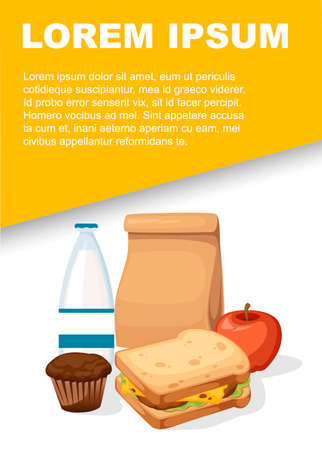1. Understanding the Mediterranean Diet and Blue Zones
When we talk about the secrets to living longer and healthier, two concepts always stand out: the Mediterranean diet and Blue Zones. The Mediterranean diet is inspired by the traditional eating patterns of countries bordering the Mediterranean Sea—think Greece, Italy, and southern France. It’s not just about food, but about a lifestyle that values fresh vegetables, fruits, whole grains, legumes, olive oil, moderate fish and poultry, and a glass of wine with friends or family. In parallel, Blue Zones are regions around the world where people live notably longer, healthier lives—places like Sardinia in Italy, Ikaria in Greece, Okinawa in Japan, and Loma Linda in California. Researchers found that these communities share common principles: plant-focused diets, strong social connections, regular physical activity, and a sense of purpose. What ties these concepts together is their foundation in balance and sustainability—not quick fixes or fad diets. Studies consistently show that following these principles reduces risks for chronic diseases like heart disease and diabetes while promoting longevity. For Americans interested in adapting these time-tested habits to our fast-paced culture, understanding the core values behind the Mediterranean diet and Blue Zone lifestyles is an essential first step toward lasting health.
2. Why America Needs the Mediterranean Touch
America is a land of abundance, innovation, and cultural diversity, but our relationship with food has become increasingly complicated. Fast food drive-thrus, oversized portions, and processed snacks have become part of daily life for many families. While convenience is king, the results are showing up in our health statistics: rising rates of obesity, type 2 diabetes, heart disease, and even stress-related illnesses are now common across generations.
The Modern American Diet: Challenges at a Glance
| Common Challenge | Impact on Health | Typical Examples |
|---|---|---|
| High Sugar Intake | Weight gain, diabetes risk | Sodas, pastries, sweetened cereals |
| Processed Foods | Inflammation, heart disease | Frozen dinners, chips, deli meats |
| Oversized Portions | Poor portion control, overeating | Restaurant entrees, super-sized drinks |
| Lack of Fresh Produce | Nutrient deficiencies, low fiber intake | Few fruits/veggies in meals and snacks |
| Fast Food Culture | Poor nutrition quality, excess sodium/fat | Burgers, fries, pizza on-the-go |
The Call for Evidence-Based Solutions
Many Americans are aware that changes need to happen but feel overwhelmed by conflicting diet trends and a busy lifestyle. This is where the Mediterranean diet stands out—it’s not just another fad but a time-tested approach backed by decades of research from Blue Zones like Sardinia and Ikaria. These regions have some of the world’s healthiest populations, living longer with fewer chronic diseases. The Mediterranean way emphasizes whole foods, mindful eating habits, and social connection around meals—practices that can address America’s modern challenges head-on.
Why Now?
The urgent need for evidence-based nutrition solutions in the U.S. is clear: our current habits aren’t sustainable for our health or well-being. Embracing Mediterranean principles doesn’t mean giving up beloved American foods—it means learning how to adapt these traditions into our own context for a healthier future.

3. Making It Work: Adapting Recipes and Meal Planning
Simple Swaps for Everyday Favorites
Adopting the Mediterranean diet doesn’t mean saying goodbye to your favorite American foods. Instead, it’s about making smart swaps and adjustments that honor Blue Zone principles while fitting your lifestyle. Try using olive oil instead of butter for cooking, or choose whole grain bread over white sandwich bread. Swap out ground beef for ground turkey or beans in chili, tacos, or burgers. Even classic dishes like mac and cheese can be lightened up with whole wheat pasta and a veggie-packed sauce.
Meal Prep Made Easy
The key to sticking with any new eating pattern is preparation. Set aside some time each week to plan your meals and prep ingredients. Chop fresh vegetables ahead of time, cook a batch of brown rice or quinoa, and portion out nuts or seeds for snacks. Consider making Mediterranean-inspired salads, like a Greek salad or chickpea salad, that keep well in the fridge and are ready to grab on busy days.
Grocery Shopping Strategies
Navigating the American supermarket can be overwhelming with so many processed options lining the aisles. Stick to the perimeter where you’ll find fresh produce, lean proteins, and dairy. Stock up on staples like canned beans, lentils, olive oil, canned tuna or salmon, whole grains, and frozen veggies—these are convenient and help build quick Mediterranean meals at home. Don’t forget to check out the international aisle for spices such as oregano, basil, cumin, and smoked paprika to boost flavor without extra salt or fat.
Batch Cooking and Leftover Magic
If you’re juggling work and family life, batch cooking can be a lifesaver. Make large portions of roasted vegetables, whole grains, or soups on the weekend and use them as building blocks throughout the week. Leftover grilled chicken can become tomorrow’s wrap or salad topper; extra roasted veggies can be mixed into omelets or pasta dishes for a Mediterranean twist.
Balancing Tradition With New Habits
Remember, adapting these Blue Zone secrets isn’t about perfection—it’s about progress and finding what works in your real life. Start small by integrating more plant-based foods into your usual meals and celebrating little wins along the way. The Mediterranean approach is flexible enough to fit into American routines while offering big benefits for long-term health.
4. Navigating Social Life and Eating Out
If you’ve ever tried to stick to healthier eating habits, you know how quickly good intentions can unravel when social events pop up. Whether it’s happy hour with friends, a family barbecue, or the classic American potluck at work, the Mediterranean diet can feel tough to maintain. But with a bit of planning and some real-world strategies, you can enjoy these moments without straying from your wellness goals.
Restaurant Survival Guide
| Challenge | Mediterranean Tactic |
|---|---|
| Heavy, meat-centered menus | Opt for grilled fish or chicken; request extra veggies as sides. |
| Bread baskets and creamy dips | Ask for olive oil instead of butter; choose hummus or tzatziki over cheese dips. |
| Sugary cocktails | Order red wine or a sparkling water with lemon and fresh mint. |
Family Gatherings & Potlucks
Americans love their potlucks and backyard cookouts. To stay on track:
- Bring a dish: Show off your Mediterranean skills with a big Greek salad, roasted veggies, or a chickpea-based dip. Your dish might even inspire others to eat healthier!
- Fill half your plate with plants: Load up on salads, beans, and grilled vegetables before adding other items.
- Pace yourself: Enjoy conversations and eat slowly—classic Blue Zone wisdom that helps you tune into fullness cues.
Workplace Events & Office Snacks
Cubicle celebrations often mean donuts and pizza. Here’s how to adapt:
- Suggest alternatives: Recommend fruit platters, nuts, or whole-grain crackers for meetings.
- Stock your desk: Keep almonds, dried fruit, or single-serve olives handy for those snack attacks.
- Stay social—skip the soda: At office parties, opt for sparkling water with a splash of citrus. It feels festive but stays true to Mediterranean principles.
The Bottom Line: Consistency Over Perfection
No one eats perfectly all the time—especially in America’s food-centric culture. The key is finding little ways to infuse Mediterranean habits wherever you are. With practice, these choices become second nature—even when life gets busy or unpredictable.
5. Success Stories: Everyday Americans Embracing the Mediterranean Way
From Coast to Coast: Real People, Real Results
When you hear about the Mediterranean diet, it’s easy to picture sun-drenched villages in Italy or Greece—but a growing number of Americans are proving you don’t need a passport to reap its benefits. Meet Bill from Ohio, who after turning 50, was determined to lower his cholesterol without medication. Inspired by Blue Zone research, Bill swapped out his usual burgers for grilled fish and colorful salads drizzled with olive oil. Within six months, his energy soared, and his doctor was floored by his improved lab results.
Finding Balance in Busy American Lives
Susan, a working mom from Texas juggling two teens and a demanding job, found herself constantly reaching for fast food. After her annual physical revealed high blood pressure, she decided to embrace a Mediterranean approach—batch cooking veggie-rich stews on Sundays and keeping nuts and fruit handy for snacks. Susan’s family soon got on board too, enjoying taco nights with whole wheat pitas and roasted veggies instead of processed shells. Now, they look forward to mealtimes as moments to connect rather than rush.
The Power of Community and Small Changes
For Mark and Lisa, an empty-nester couple in California, adopting the Mediterranean lifestyle started with joining a neighborhood walking group that ended every Saturday stroll with a potluck of wholesome dishes. Swapping recipes and stories became just as important as the meals themselves. “We didn’t overhaul everything at once,” says Lisa. “We just made small swaps—brown rice instead of white, beans in our chili, extra veggies on our pizza.” The results? Mark shed 20 pounds over a year, and both noticed fewer aches and better sleep.
A Ripple Effect Across Generations
These stories aren’t just about individual health—they’re about sparking positive change in families and communities. Grandparents like Mary in Florida have inspired their grandkids to try new foods by making homemade hummus together; office workers in Chicago have started lunchtime salad clubs; church groups in Georgia host Mediterranean-themed potlucks. Each step is proof that the Mediterranean way isn’t reserved for those living by the sea—it’s thriving right here in America’s heartland.
6. Getting Started: Small Steps for Lifelong Change
Adopting the Mediterranean Diet and Blue Zone habits might sound overwhelming at first, especially within the fast-paced, convenience-driven American lifestyle. But lasting change comes from taking small, intentional steps—think progress, not perfection. Here’s a practical guide to help you weave these time-tested principles into your daily routine without feeling deprived or out of place.
Step 1: Start with One Meal a Day
Pick one meal—maybe breakfast or lunch—to “Mediterranean-ize.” Swap out processed cereals for Greek yogurt with berries and walnuts, or trade your usual sandwich for a salad topped with grilled chicken, chickpeas, olive oil, and colorful veggies. Over time, expand this habit to other meals.
Step 2: Make Your Plate Colorful
Blue Zones emphasize plant-based diversity. Challenge yourself to add two new vegetables to your weekly grocery list. Roast sweet potatoes instead of fries or toss spinach into your morning smoothie. Simple swaps like these add flavor and nutrition without sacrificing convenience.
Step 3: Rethink Protein Choices
Incorporate more plant-based proteins like beans, lentils, and nuts. Try a “meatless Monday,” or use half the amount of ground beef in your chili and double up on black beans. This approach is heart-friendly and budget-conscious—a win-win!
Step 4: Savor Meals Mindfully
Blue Zone communities value slow eating and social connection around food. Turn off the TV, put away your phone, and invite family or friends to share a meal. If eating solo, light a candle or listen to calming music to create a peaceful environment.
Step 5: Move Naturally Every Day
You don’t need a gym membership to follow this principle. Walk your dog after dinner, take the stairs at work, or try gardening on weekends. The goal is to make movement an effortless part of your day.
Set Realistic Goals and Celebrate Wins
Change is about sustainability, not overnight transformation. Set one simple goal per week—like cooking three Mediterranean-inspired dinners—and track your progress in a journal or app. Don’t forget to celebrate small victories! Every step forward counts toward lifelong health.
The Mediterranean Diet isn’t just about food—it’s about embracing joy, connection, and balance in everyday life. By starting small and focusing on realistic changes that fit your unique American lifestyle, you’ll build habits that last a lifetime and bring the best of the Blue Zones right into your home.


